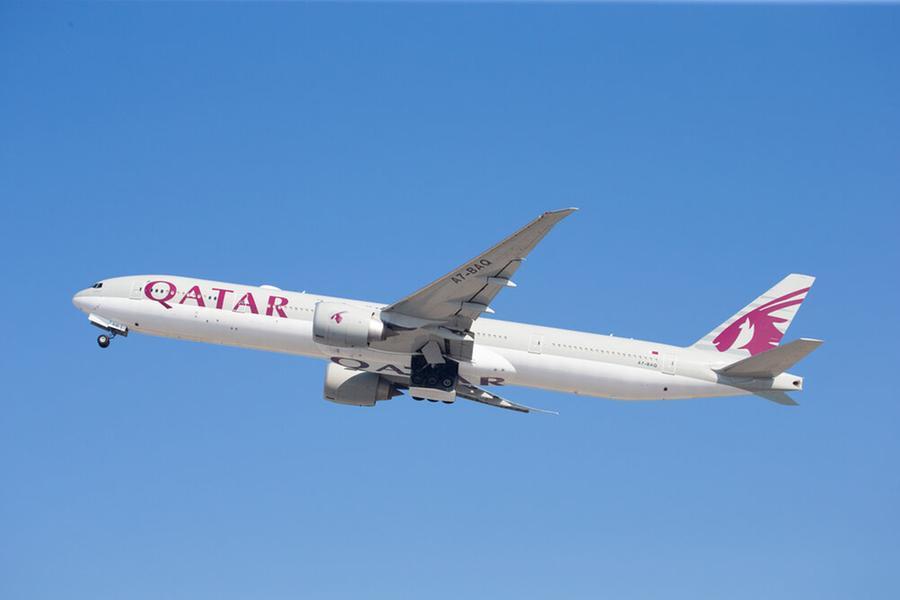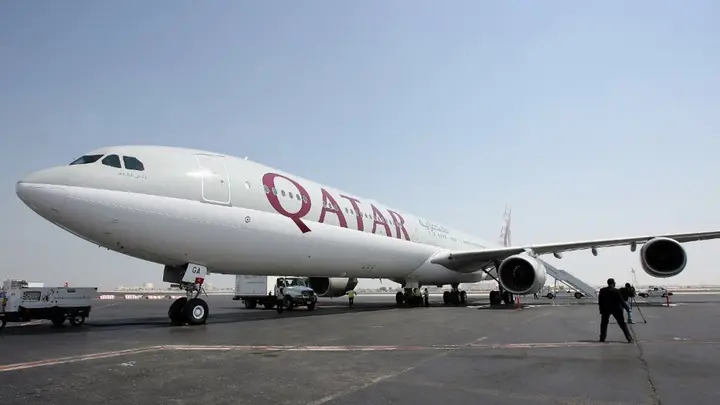Qatar Airways Beats is flying high as it reports an impressive load factor exceeding 85% on its flights to the United States—at a time when several international airlines are struggling with reduced interest in transatlantic travel. According to the airline’s Chief Executive Officer, Badr Mohammed Al Meer, this performance highlights Qatar Airways’ strength, strategic planning, and resilience in the face of global aviation challenges.
Speaking at the Qatar Economic Forum held at Hamad International Airport in Doha, Al Meer said the airline has been witnessing consistently high demand on its U.S. routes. He noted that the average load factor has ranged between 86% and 87% in recent weeks—a significant achievement, especially when compared to other airlines who have reported declining passenger interest in long-haul travel, particularly to North America.
“We are seeing very high demand across our network, especially in the United States,” Al Meer said. “April was one of the best-performing months in our history in terms of U.S. flights, and we expect this trend to continue into May and June.”
Surpassing Expectations Amid Global Aviation Hurdles

This high load factor reflects more than just consumer demand—it highlights Qatar Airways’ ability to adapt and thrive despite facing operational challenges across the aviation industry. From rising fuel prices to global supply chain disruptions and the aftermath of the pandemic, many airlines have been forced to scale back operations, cut costs, or reduce frequencies.
Yet, Qatar Airways continues to perform exceptionally well. Al Meer attributed this to the airline’s long-term strategy, its focus on passenger experience, and an ability to pivot quickly in response to global changes.
“We have faced numerous challenges over the years at Qatar Airways,” Al Meer said. “But time and time again, we have shown that we are a resilient and forward-thinking airline.”
Record-Breaking Financial Performance
Qatar Airways is not only filling its seats but also its bank accounts. The airline recently reported a record net profit of $1.7 billion for the financial year 2023-2024. This is the highest profit recorded in the airline’s 27-year history.
The company’s total revenue climbed to $22.2 billion, marking a 6% increase compared to the previous year. Passenger traffic soared by 26%, with over 40 million travelers choosing Qatar Airways for their journeys. This growth was fueled by an average load factor of 83% across the network—also a new record for the carrier.
Industry analysts view these figures as a strong indication that Qatar Airways is successfully navigating the post-pandemic travel landscape while setting new standards for performance and reliability.
Al Meer expressed optimism that the airline will surpass this profit benchmark in the coming fiscal year. “We expect to see even higher numbers going forward,” he added.
A Strategic Approach to U.S. Routes
Qatar Airways operates more than 100 flights per week to the United States, covering 11 major destinations. These include daily flights to key cities such as Atlanta, Boston, Chicago, Dallas, Houston, Los Angeles, Miami, New York, Philadelphia, San Francisco, and Seattle.
While the airline had initially planned to expand some U.S. routes during the summer of 2025, including increasing frequencies to Los Angeles and New York, those plans have been temporarily paused. Al Meer clarified that these changes were based on broader global operational planning rather than reduced demand. In fact, the current passenger figures suggest sustained interest in U.S. destinations.
By maintaining its current level of service and focusing on optimizing load factors, Qatar Airways is demonstrating a strategic balance between growth and efficiency.
A Stronger Recovery Than Competitors
The airline’s strong performance comes at a time when many of its competitors are reporting a drop in interest on long-haul routes, particularly to North America. Industry experts cite a mix of factors contributing to the decline, including high ticket prices, inflationary pressures, and lingering concerns over geopolitical tensions.
However, Qatar Airways appears to be bucking the trend. Analysts suggest that its superior in-flight service, newer aircraft fleet, and efficient connections through Hamad International Airport make it a preferred choice for long-haul travelers.
Additionally, Qatar Airways’ strategic partnerships and membership in the Oneworld alliance give it access to a broader customer base and more competitive pricing power. This combination has positioned the airline as one of the few international carriers able to thrive amid turbulent global conditions.
Looking Ahead: Growth, Innovation, and Excellence
Looking to the future, Qatar Airways plans to continue its focus on enhancing the passenger experience, investing in fleet modernization, and expanding global connectivity through new partnerships and destinations. The airline’s commitment to innovation, customer satisfaction, and operational excellence remains central to its strategy.
Hamad International Airport, which serves as the airline’s primary hub, is also undergoing expansions to support future growth. Al Meer indicated that new infrastructure and services would be rolled out over the next several years to accommodate rising demand and elevate the travel experience further.
As the global aviation industry continues to rebound from past disruptions, Qatar Airways stands out as a leader in recovery, resilience, and profitability.
Final Thoughts
In a time when uncertainty continues to loom over the global travel sector, Qatar Airways is writing a different story—one of confidence, consistency, and record-breaking performance. By exceeding an 85% load factor on U.S. routes and delivering historic financial results, the airline has shown that smart strategy and relentless focus on service can overcome even the most turbulent skies.



